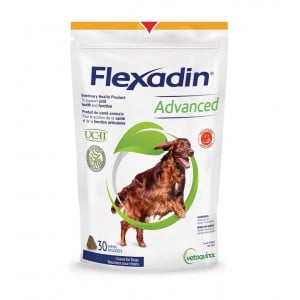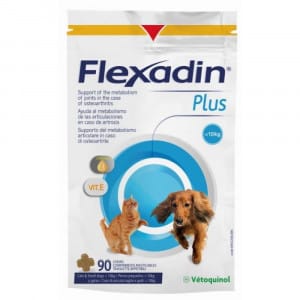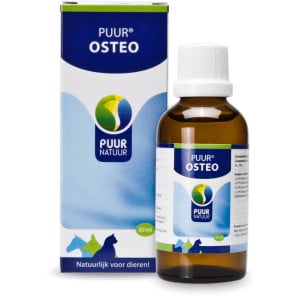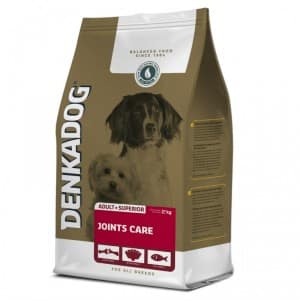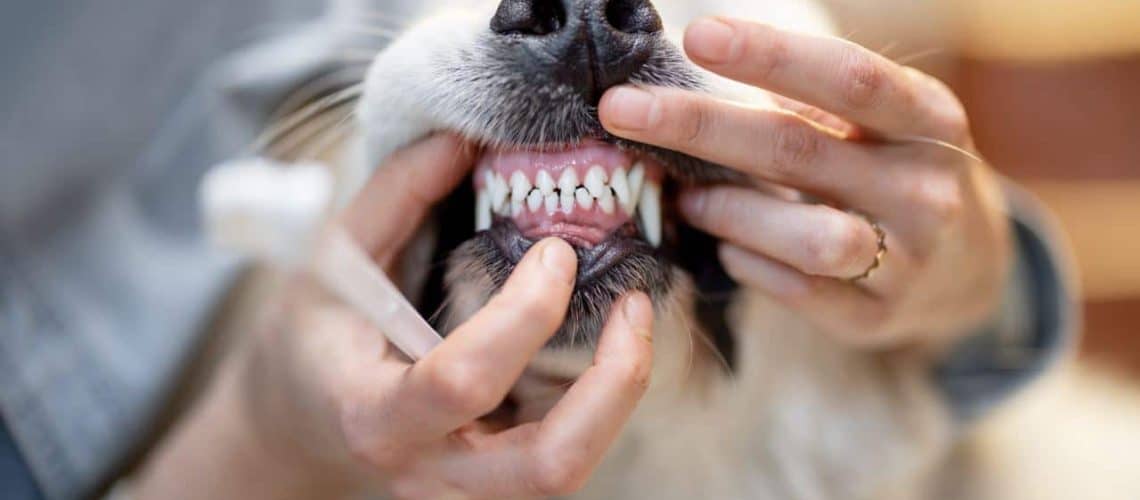In our society, dogs play a special role as loyal companions, work partners and sources of joy and comfort. They are living creatures who, like humans, are prone to health problems as they age.
One of the most common conditions that affects dogs as they reach their golden years is osteoarthritis. Osteoarthritis in dogs, also known as joint wear and tear, can significantly affect the well-being of our beloved four-legged friends. In this article, we will take a deeper look at osteoarthritis in dogs, recognize the symptoms, understand the causes and more importantly, discuss how to improve the quality of life for dogs with this condition. It is time to bring this underexposed problem to light and increase our efforts to help our furry companions live healthier and more comfortable lives.

What is osteoarthritis?
Osteoarthritis in dogs, also called degenerative joint disease, is a common condition that occurs when the cartilage in a dog’s joints begins to wear down. Cartilage acts as a cushion between bones, allowing joints to move smoothly. When this cartilage becomes damaged, the bones are subjected to friction and wear, leading to pain, inflammation and reduced mobility.
Osteoarthritis can result from aging, genetic predisposition, obesity, injury to joints, or even a combination of these factors. Understanding this condition is essential to provide timely intervention and the necessary care for our faithful four-legged friends suffering from osteoarthritis.
What are the symptoms of osteoarthritis in dogs?
Osteoarthritis in dogs manifests itself with a range of symptoms that can significantly affect the daily lives of our faithful four-legged friends. These symptoms include stiffness when getting up, especially after periods of rest, such as sleep or lying down. You may also notice that your dog has difficulty moving, shows a decrease in activity and walks more slowly than before. Joint stiffness and swelling may occur, manifesting as reduced flexibility and sometimes visible joint pain.
Dogs with osteoarthritis may limp and avoid their favorite activities, such as playing or climbing stairs. They may also become more moody because of the pain. Changes in appetite and sleeping patterns may also occur. Recognizing these symptoms is critical to seeking timely medical attention and taking appropriate action to improve your beloved pet’s comfort and quality of life.
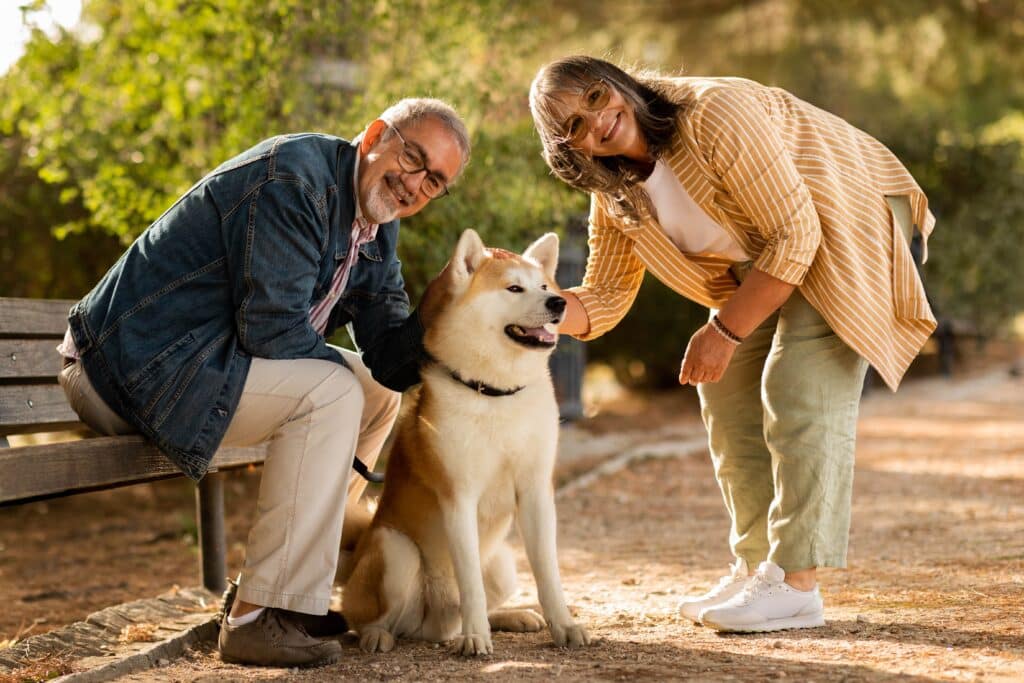
What are the consequences of osteoarthritis in dogs?
Osteoarthritis in dogs has significant effects on their overall health and well-being. First, this condition can cause significant pain and discomfort, leading to a decrease in the animal’s quality of life. The constant pain can lead to mood changes, irritability and decreased interest in daily activities.
In addition, osteoarthritis can limit the dog’s mobility, making it more difficult to move, play and even perform simple tasks such as getting up or climbing stairs. This can lead to weight gain and muscle loss, which in turn worsens the strain on the affected joints.
In the long run, untreated osteoarthritis can lead to further joint damage and even permanent disability. It is therefore essential to take the effects of osteoarthritis seriously and consider appropriate medical care and management measures to relieve pain and improve the dog’s quality of life.
How do you tell when a dog has osteoarthritis?
Recognizing osteoarthritis in dogs requires attention to subtle changes in their behavior and physical abilities. Some clues that a dog may have osteoarthritis include:
- Stiffness: You may notice that your dog has difficulty getting up, especially in the morning or after prolonged periods of rest.
- Difficulty moving: Osteoarthritis can lead to slower and less supple movement. Watch for limping, waddling or uncomfortable movements.
- Changed activity: If your dog begins to avoid his favorite activities, such as playing or walking, this may be a sign of pain.
- Weight gain: Dogs with osteoarthritis may become less active and gain weight as a result, worsening symptoms.
- Changes in behavior: Irritability, aggression or withdrawal may occur as a result of the pain.
- Noise: Sometimes dogs with osteoarthritis may squeak, groan or pant when they move because of the pain.
It is important to consult a veterinarian if you notice one or more of these symptoms so that proper diagnosis and treatment can be made to ensure your dog’s well-being.
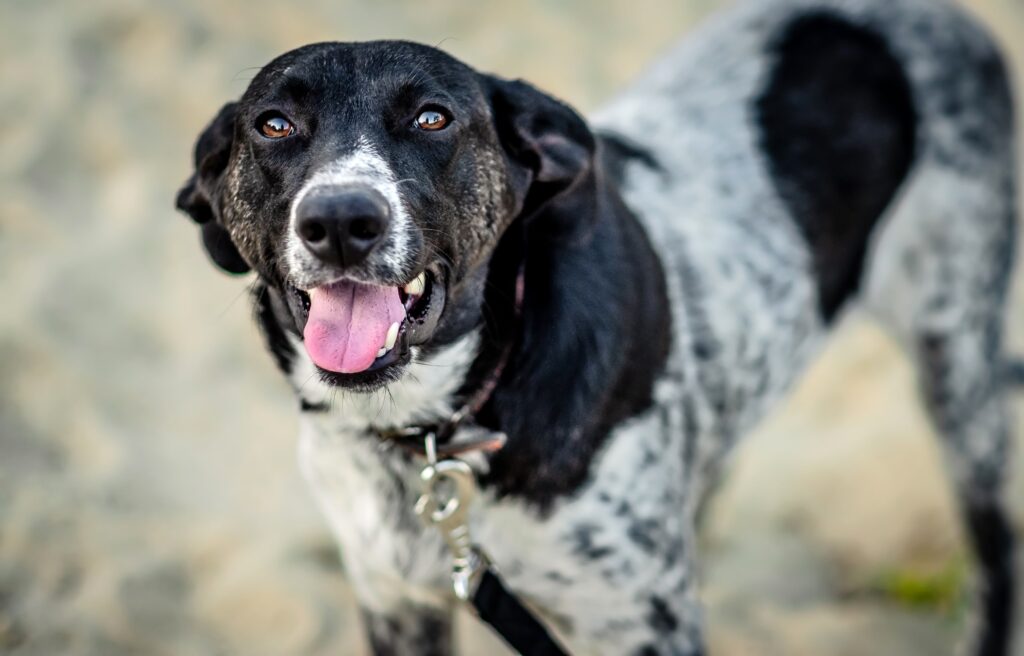
What is the best way to treat a dog with osteoarthritis?
If your dog has osteoarthritis, it is crucial to take action quickly. Start with a visit to the veterinarian to confirm the diagnosis and discuss treatment options. Medication, weight management (nutrition) and appropriate exercise are often part of the treatment plan. Physical therapy and orthopedic devices can also help.
Medication
In dogs with osteoarthritis, medications can relieve pain and reduce inflammation. Common medications include nonsteroidal anti-inflammatory drugs (NSAIDs) such as carprofen, glucosamine sulfate and chondroitin sulfate for cartilage support, corticosteroids for inflammation, and opioids such as tramadol for severe pain. The choice depends on individual needs and should always be discussed with a veterinarian. Strict dosing and regular monitoring are essential. A combination of medications, appropriate exercise and weight management can improve the quality of life for dogs with osteoarthritis and allow them to live more comfortably despite this condition.
Nutritional supplements
One of the most effective ways to relieve the symptoms of osteoarthritis in dogs is to add nutritional supplements to your dog’s diet. These supplements contain ingredients that promote joint health and reduce inflammation. Here are some popular options:
1. Flexadin Advanced Voedingssupplement: Dit supplement bevat ingrediënten zoals UC-II® en Omega-3 vetzuren, die helpen bij het behouden van gezonde gewrichten en het verminderen van ontstekingen.
2. Flexadin Plus voor Kleine Honden: Dit is een specifieke variant van Flexadin voor kleine honden, die dezelfde voordelen biedt, maar is afgestemd op de behoeften van kleinere rassen.
3. Puur Osteo voor Hond, Kat en Paard: Puur Osteo is een natuurlijk supplement dat ingrediënten bevat zoals chondroïtine en glucosamine, die essentieel zijn voor gezonde gewrichten.
Customized nutrition for joint care
In addition to dietary supplements, you can also consider modifying your dog’s diet to support his joint health. There are special dog foods designed to reduce the symptoms of osteoarthritis and improve mobility. One of the recommended products is:
Denkadog Joint Care Dog Food
This food is specially formulated with ingredients such as glucosamine and chondroitin to promote joint health. It is designed to relieve the symptoms of osteoarthritis and improve mobility.
Before adjusting your dog’s diet or introducing dietary supplements, it is essential to consult with a veterinarian. A veterinarian can assess the severity of osteoarthritis and make recommendations based on your dog’s specific needs. They can also help determine the proper dosage and monitor progress.
Adjusting your dog’s diet is an important part of managing osteoarthritis and improving your four-legged friend’s quality of life. Using dietary supplements and specialty foods, you can support your dog’s joint health and help him be more active and happy, even if he suffers from this pesky condition. Remember to always follow your veterinarian’s recommendations and adjust your dog’s diet gradually for best results.
Adapted exercise
Appropriate exercise is crucial for dogs with osteoarthritis. Although they may not be able to engage in intense activity, regular, mild exercise is critical to strengthen the muscles around affected joints, reduce stiffness and maintain mobility. Short, frequent walks and swimming are often suitable options. However, it is essential to dose the exercise and listen to your dog’s signals to avoid overexertion. Always consult a veterinarian for advice on the proper exercise regime for your dog with osteoarthritis.
Dog insurance is a smart consideration in this situation. Osteoarthritis treatment can be lengthy and costly. Good insurance can cover much of the medical costs, allowing you to provide your dog with the care he needs without financial stress. Make sure the insurance covers chronic conditions, such as osteoarthritis, and read the policy terms carefully.
With proper care and support, your dog, even with osteoarthritis, can live a comfortable and happy life.

Life expectancy in dogs with osteoarthritis
The life expectancy of dogs with osteoarthritis can vary depending on several factors, including the severity of the condition, the dog’s age, the treatment and care they receive. Osteoarthritis is a chronic condition and does not directly affect a dog’s lifespan on its own.
With proper medical care, including medication, physical therapy and weight management, many dogs with osteoarthritis can maintain a good quality of life for many years to come. It is important to recognize symptoms early and begin a treatment plan to slow further progression of the condition.
It is also crucial to consult the veterinarian regularly for follow-up and possible treatment adjustments. A healthy lifestyle and loving care can significantly improve the life expectancy of dogs with osteoarthritis, allowing them to live a happy and comfortable life despite this condition.
The importance of pet insurance
Having a dog with osteoarthritis can be emotionally and financially challenging. It is vital to consider getting pet insurance. Osteoarthritis is a chronic condition that requires long-term care and treatment. These costs can add up quickly and place a significant burden on your budget.
Pet insurance provides peace of mind by covering some of the medical costs, including medications, physical therapy, and regular vet visits. Without insurance, financial concerns may hinder your ability to provide needed care for your beloved pet.
Be sure to choose insurance that provides specific coverage for chronic conditions such as osteoarthritis. Read the policy terms carefully to understand what expenses are and are not covered. Pet insurance allows you to give your dog the best care without worrying about the financial burden. It is an investment in the health and well-being of your furry companion.

Conclusion
In conclusion, osteoarthritis in dogs is a common and often painful condition that requires careful attention and treatment. It is essential to watch for the first signs of osteoarthritis, such as stiffness and decreased mobility, and consult a veterinarian immediately for a diagnosis and treatment plan. An integrated approach, including medication, weight management, appropriate exercise and possibly physical therapy, can significantly improve your dog’s life.
An important aspect not to overlook is obtaining dog insurance. Osteoarthritis treatment can be costly, and insurance offers peace of mind by providing financial support for medical expenses. It is critical to choose insurance with specific coverage for chronic conditions such as osteoarthritis and to understand the policy terms carefully.
With timely diagnosis, careful treatment and the right insurance, dogs with osteoarthritis can enjoy many happy and comfortable years to come. It is our responsibility as pet parents to make sure they receive the best care and attention they deserve.


